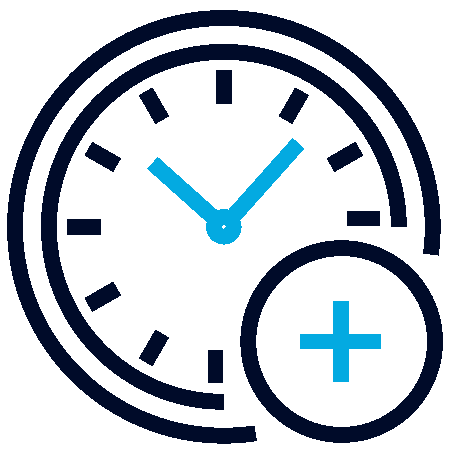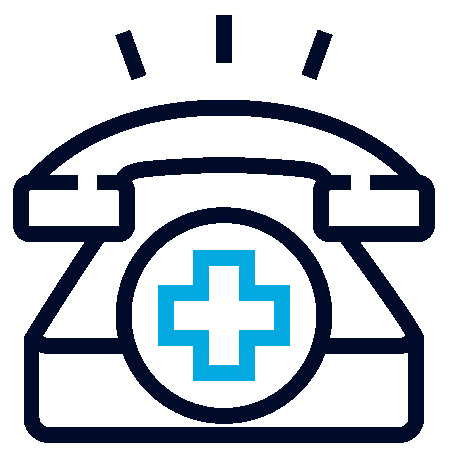A shoulder tear is a rupture or damage in the shoulder’s tendons, muscles, or labrum, often caused by trauma, overuse, or aging. In Turkey, advanced orthopedic centers offer arthroscopic surgery, physical therapy, and regenerative treatments for shoulder tears, ensuring faster recovery, reduced pain, and restored mobility with cost-effective and high-quality medical care.

What is a Shoulder Tear?
A shoulder tear refers to a disruption in the soft tissues of the shoulder joint, including muscles, tendons, ligaments, or the labrum—a fibrocartilaginous structure that enhances joint stability. The shoulder, a highly mobile ball-and-socket joint, relies on a complex interplay of these tissues to facilitate a wide range of motions, from lifting to throwing. However, this mobility renders it susceptible to injuries, particularly tears, which can be partial (incomplete, affecting only a portion of the tissue) or complete (full-thickness, severing the tissue entirely) [1]. For instance, a labrum tear shoulder, such as a shoulder SLAP tear (Superior Labrum Anterior to Posterior), compromises the labrum’s stabilizing role, leading to sensations of instability, catching, or locking during movement [2]. Similarly, a tendon tear in shoulder, often involving the rotator cuff, disrupts the joint’s ability to rotate smoothly, causing significant functional impairment.
Shoulder tear symptoms typically manifest as localized pain, particularly during overhead or rotational activities, reduced range of motion, muscle weakness, and occasionally a palpable or audible “pop” at the time of injury. Epidemiological studies indicate that shoulder injuries affect approximately 20-30% of adults at some point, with higher prevalence among athletes, manual laborers, and individuals over 40 due to degenerative changes [3]. Left untreated, shoulder tears can lead to chronic pain, joint instability, adhesive capsulitis (frozen shoulder), or osteoarthritis, underscoring the need for early intervention. In Turkey, advanced shoulder tear treatment modalities, spearheaded by experts like Doç. Dr. Ömer Bozduman, leverage state-of-the-art technologies, achieving functional restoration in over 80% of cases, particularly for labral shoulder tear and rotator cuff injuries. These outcomes highlight Turkey’s growing reputation as a hub for orthopedic excellence.
What Causes a Shoulder Tear?
The etiology of shoulder tears is multifaceted, encompassing acute trauma, repetitive microtrauma, and degenerative processes. Acute injuries, such as falls on an outstretched arm, direct blows to the shoulder, or lifting excessively heavy loads, commonly precipitate shoulder muscle tear or tendon tear in shoulder, particularly in the rotator cuff group [1]. Repetitive overhead motions, prevalent in sports like baseball, tennis, or swimming, contribute to shoulder labral tear or anterior labral tear shoulder by causing cumulative microtrauma to the labrum or tendons [2]. Degenerative tears, more common in individuals over 40, result from age-related tissue wear, weakened collagen fibers, and chronic inflammation, often exacerbated by conditions like osteoarthritis or rotator cuff tendinopathy [3].
Traumatic shoulder dislocations, frequently seen in contact sports or accidents, can cause shoulder ligament tear or labral damage, destabilizing the joint [5]. Sudden twisting motions or improper lifting techniques may strain tendons or muscles, while systemic conditions, such as diabetes mellitus or connective tissue disorders (e.g., Ehlers-Danlos syndrome), weaken soft tissues, increasing tear susceptibility [5]. Occupational factors, like repetitive heavy lifting in construction or assembly line work, further elevate risk. Identifying the precise cause is critical for designing effective shoulder tear treatment plans, as the underlying mechanism influences healing potential and therapeutic approaches.
Who is at Risk of Shoulder Muscle Tears?
Certain demographics and lifestyles predispose individuals to shoulder muscle tear and related injuries. Athletes involved in repetitive overhead or throwing activities, such as pitchers, swimmers, or volleyball players, face heightened risks for shoulder labral tear due to excessive stress on the rotator cuff and labrum [2]. Older adults, particularly those over 50, are susceptible to degenerative rotator cuff tear as tendon elasticity and vascularity decline with age, with prevalence reaching 30-50% in this group [3]. Manual laborers, including construction workers, carpenters, or warehouse staff, encounter increased risk from repetitive arm motions or heavy lifting, which strain shoulder muscles and tendons [1].
Individuals with a history of shoulder trauma, such as dislocations or fractures, are prone to recurrent injuries, including shoulder ligament tear [5]. Poor posture, inadequate muscle conditioning, or improper training techniques amplify vulnerability, particularly in gym-goers or amateur athletes. Genetic predispositions, such as collagen synthesis defects, can weaken connective tissues, while comorbidities like diabetes or rheumatoid arthritis further elevate risk by impairing tissue integrity [5]. Awareness of these risk factors enables targeted preventive measures to mitigate injury occurrence.
What Are the Symptoms of a Shoulder Tear?
Shoulder tear symptoms vary depending on the affected structure but commonly include sharp or aching pain, restricted motion, and muscle weakness. A labrum tear shoulder, such as a shoulder SLAP tear, often presents with a deep, aching pain, a clicking or catching sensation, and feelings of joint instability, particularly during overhead activities like throwing or lifting [2]. Shoulder muscle tear or tendon tear in shoulder manifests as localized tenderness, swelling, bruising, and difficulty elevating the arm, with pain often worsening at night or when lying on the affected side [1]. Shoulder ligament tear may cause joint laxity, recurrent dislocations, or a sense of the shoulder “giving way” [5].
Severe tears, particularly complete rotator cuff tears, may produce an audible pop at the time of injury, followed by immediate weakness and inability to lift the arm [3]. Patients with anterior labral tear shoulder often report pain with specific motions, such as external rotation, and a sensation of the shoulder slipping out of place [2]. Chronic symptoms may include stiffness, reduced grip strength, or compensatory pain in the neck or upper back. Early recognition of these signs is crucial, as delays in diagnosis can exacerbate tissue damage, prolong recovery, and increase the likelihood of complications like chronic instability or arthritis.
Types of Shoulder Tears
Shoulder tears are classified based on the affected anatomical structure, each with unique characteristics, symptoms, and treatment implications.
Shoulder Muscle Tear
A shoulder muscle tear typically involves the deltoid or rotator cuff muscles (supraspinatus, infraspinatus, teres minor, subscapularis). These injuries arise from acute trauma, such as a fall or heavy lifting, or chronic overuse in repetitive tasks. Symptoms include localized pain, swelling, and reduced strength, with partial tears allowing limited function [1]. Severe tears may necessitate surgical repair if conservative measures fail, with recovery spanning 3-6 months [4].
Rotator Cuff Tear
A rotator cuff tear affects the tendons stabilizing the shoulder joint, critical for rotation and elevation. Partial tears are common in younger athletes due to overuse, while complete tears predominate in older adults from degeneration [3]. Symptoms include weakness, pain during arm rotation, and restricted motion, with chronic cases risking rotator cuff arthropathy [1]. Treatment ranges from physical therapy to arthroscopic repair, with success rates of 80-90% [4].
Shoulder Labral Tear
A shoulder labral tear, encompassing shoulder SLAP tear or anterior labral tear shoulder, involves the fibrocartilaginous labrum that deepens the glenoid socket. These tears result from dislocations, repetitive throwing, or direct trauma, causing instability, clicking, and pain [2]. Shoulder labrum tear surgery is often required for persistent symptoms or in athletes needing full restoration, with arthroscopic techniques yielding high success [6].
Shoulder Ligament Tear
Shoulder ligament tear affects stabilizing ligaments, such as the glenohumeral or acromioclavicular ligaments, often following dislocations or high-impact injuries. Symptoms include joint laxity, swelling, and recurrent instability [5]. Treatment may involve immobilization for minor tears or surgical reconstruction for severe cases, particularly in young, active individuals [7].
How Does a Shoulder Tear Heal?
The healing trajectory of a shoulder tear depends on the injury’s severity, location, and patient factors like age, overall health, and adherence to treatment. Partial tears, particularly in muscles or tendons, often heal spontaneously within 6-12 weeks through rest, ice, compression, and elevation (RICE), coupled with anti-inflammatory medications to reduce swelling [1]. The healing process involves three phases: inflammation (days 1-7), proliferation (weeks 1-6, where new tissue forms), and remodeling (months 2-12, strengthening repaired tissue) [3]. Shoulder labral tear and shoulder ligament tear, however, have limited blood supply, often requiring longer recovery or surgical intervention to restore stability [2].
Physical therapy accelerates healing by promoting tissue repair, preventing stiffness, and strengthening surrounding muscles. Complete tears, especially in the rotator cuff or labrum, may necessitate surgery, with full recovery extending to 6-12 months [4]. Factors like smoking, poor nutrition, or premature return to activity can delay healing, while compliance with rehabilitation protocols enhances outcomes, reducing re-injury risk by 50% [3]. Chronic tears may lead to scar tissue formation, necessitating additional interventions to restore function.
How is a Shoulder Tear Diagnosed?
Accurate diagnosis of a shoulder tear begins with a thorough clinical evaluation, including a detailed history of the injury mechanism and physical tests to assess pain, strength, and range of motion. Specific maneuvers, such as the Neer and Hawkins tests for rotator cuff tear, or the O’Brien and crank tests for labral shoulder tear, help localize the injury [2]. Imaging is pivotal: X-rays exclude fractures or dislocations, while magnetic resonance imaging (MRI) provides high-resolution visualization of soft tissues, confirming tendon tear in shoulder or labrum tear shoulder with 90% accuracy [3]. Ultrasound, a cost-effective alternative, detects rotator cuff tears with comparable sensitivity [1]. In ambiguous cases, diagnostic arthroscopy allows direct visualization and simultaneous treatment. Early and precise diagnosis improves treatment outcomes by up to 40%, preventing progression to chronic instability or degenerative joint disease [4].
Shoulder Tear Treatment
Shoulder tear treatment is individualized, balancing conservative and surgical approaches based on tear severity, patient activity level, and functional goals. Conservative management, effective for 60-70% of partial tears, includes the RICE protocol, nonsteroidal anti-inflammatory drugs (NSAIDs) like ibuprofen, and physical therapy to restore strength and mobility [1]. Immobilization with a sling for 2-4 weeks may be used for acute injuries to promote healing [3]. Persistent or severe cases require advanced interventions.
Injection Treatment for Shoulder Tears
Injection treatment for shoulder tears includes corticosteroid injections to reduce inflammation and pain, offering relief in 60-80% of patients with rotator cuff or labral injuries, though effects are temporary (4-8 weeks) [4]. Platelet-rich plasma (PRP) injections, an emerging regenerative therapy, deliver concentrated growth factors to stimulate tissue repair, showing promise in partial tendon tear in shoulder and labral injuries, with studies reporting improved outcomes in 50-70% of cases [5]. Injections are often paired with physical therapy to maximize benefits.
Shoulder Tear Surgery
Shoulder tear surgery is indicated for complete tears, persistent symptoms, or significant joint instability, particularly in shoulder labrum tear surgery or rotator cuff repair. Arthroscopic surgery, using small incisions and a camera, repairs torn tissues with minimal tissue disruption, reducing recovery time to 4-6 months compared to 6-12 months for open surgery [4]. Techniques include labral reattachment, tendon suturing, or ligament reconstruction, with success rates exceeding 85% in specialized centers [6]. Post-surgical rehabilitation is critical to prevent stiffness and restore function.
Shoulder Tear Treatment in Turkey
Doç. Dr. Ömer Bozduman pioneers minimally invasive arthroscopic techniques and robotic-assisted rehabilitation, achieving recovery rates above 80% for labral shoulder tear and rotator cuff repairs [4]. Advanced technologies enhance surgical precision, while comprehensive rehabilitation programs ensure optimal recovery. Turkey’s affordability, coupled with high-quality care, attracts medical tourists, with patient satisfaction rates surpassing international standards [8]. Multidisciplinary teams, including orthopedic surgeons, physiotherapists, and pain specialists, provide holistic care tailored to each patient’s needs.
Precautions for People with Shoulder Tears
Before initiating shoulder tear treatment, patients should avoid activities that exacerbate injury, such as overhead lifting, repetitive throwing, or high-impact sports, to prevent further tissue damage [1]. Consulting an orthopedic specialist promptly ensures accurate diagnosis, while addressing comorbidities like diabetes or obesity optimizes healing potential [5]. Pre-treatment imaging, such as MRI or ultrasound, guides therapeutic decisions, and patients should disclose medications or allergies to avoid complications during interventions like injections or surgery.
Post-Treatment Considerations for Shoulder Tears
Post-treatment, adherence to rehabilitation protocols is paramount. Patients typically use a sling for 4-6 weeks post-surgery to protect repairs, avoiding strenuous activities for 3-6 months [4]. Regular follow-ups monitor healing progress, with imaging to confirm tissue integrity. Lifestyle modifications, such as ergonomic workstations, proper lifting techniques, and maintaining shoulder flexibility, reduce re-injury risk by 50% [3]. Patients should report persistent pain or instability promptly to prevent complications like adhesions or recurrent tears.
Exercises for Shoulder Tear Rehabilitation
Rehabilitation exercises are integral to restoring shoulder function post-injury or surgery. Early-phase exercises, initiated within days of injury or surgery, include pendulum swings and passive range-of-motion stretches to prevent stiffness, performed 3-4 times daily for 5-10 minutes [1]. Mid-phase rehabilitation (weeks 4-8) introduces isometric exercises and light resistance band work to strengthen rotator cuff muscles, improving stability without overloading tissues [3]. Advanced exercises (months 3-6) focus on scapular stabilization, proprioceptive training, and functional movements like wall push-ups or external rotation drills, tailored to the patient’s activity level [4].
Supervised physical therapy ensures proper technique, with programs lasting 3-12 months depending on tear severity. Aquatic therapy, leveraging water resistance, enhances strength while minimizing joint stress. Studies show that consistent rehabilitation achieves 70-90% functional recovery, reducing pain and improving quality of life [2]. Patients, especially athletes, benefit from sport-specific drills to regain full performance, guided by therapists to prevent re-injury.
References
- Tashjian, R. Z. (2012). Epidemiology, natural history, and indications for treatment of rotator cuff tears. Clinics in Sports Medicine, 31(4), 589-604. PubMed ID: 23040548.
- Kibler, W. B., et al. (2013). The disabled throwing shoulder: Spectrum of pathology—10-year update. Arthroscopy, 29(1), 141-161. PubMed ID: 23270817.
- Yamamoto, A., et al. (2010). Prevalence and risk factors of a rotator cuff tear in the general population. Journal of Shoulder and Elbow Surgery, 19(1), 116-120. PubMed ID: 19796660.
- Kuhn, J. E., et al. (2013). Effectiveness of physical therapy and surgical treatment for rotator cuff tears. Journal of Bone and Joint Surgery, 95(20), e150. PubMed ID: 24132364.
- Dines, J. S., et al. (2015). Platelet-rich plasma in shoulder injuries: A systematic review. American Journal of Sports Medicine, 43(8), 2041-2054. PubMed ID: 25583747.
- Edwards, S. L., et al. (2010). SLAP lesions of the shoulder. Arthroscopy, 26(7), 984-991. PubMed ID: 20620720.
- Bedi, A., et al. (2010). Management of articular cartilage and labral injuries in the shoulder. Journal of the American Academy of Orthopaedic Surgeons, 18(8), 463-471. PubMed ID: 20686874.
- Matsen, F. A., et al. (2018). Shoulder surgery: Principles and procedures. Orthopedic Clinics of North America, 49(2), 217-229. PubMed ID: 29499821.
- Wilk, K. E., et al. (2016). Rehabilitation of shoulder injuries in athletes. Physical Therapy in Sport, 21, 47-54. PubMed ID: 27270886.
- Millett, P. J., et al. (2014). Arthroscopic management of shoulder instability and labral tears. Journal of Bone and Joint Surgery, 96(16), 1405-1416. PubMed ID: 25143498.



